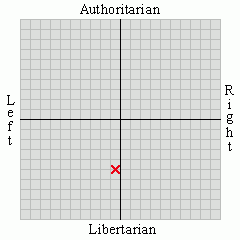 |
| Vitaly Ginzburg: 1916–2009 |
Vitaly Ginzburg was one of the
most significant theoretical physicists of the 20th century. Ginzburg was born
this day in 1916 and died on Sunday November 08, 2009 at the age of 93. He had
been ill for some time and had been hospitalized for more than a month before
his death.
Ginzburg was born in Moscow on October
04, 1916 into a Jewish family. He had a relatively short primary education,
only starting school at age 11 and leaving four years later in 1931 to work as
a technician in an X-ray laboratory at a local higher-education technical
institute. It was here that his interest in physics first began, sparked by
popular-science books such as Physics
in Our Day (not in print in English) by the Russian physicist Orest
Danilovich Hvolson.
Ginzburg joined Moscow State
University in 1933, graduating five years later with a degree in physics. He
then began a PhD, which he completed in 1940, taking just two years instead of
the usual three. Ginzburg immediately joined the P N Lebedev Physical Institute
of the Soviet Academy of Sciences, which, the following year, after the Soviet
Union entered the Second World War, was moved to the city of Kazan in central
Russia. Ginzburg obtained a DSc in 1942.
Although Ginzburg started out as
an experimental physicist in the field of optics, he eventually realized that
his talents were as a theorist and went on to work in many different areas of
physics and astrophysics. In 1950, for example, he developed with Lev Landau a
partially phenomenological theory of superconductivity. He also studied how
electromagnetic waves propagate through plasmas, such as the ionosphere,
developed a theory of the origin of cosmic radiation, and worked on the
superfluidity of helium II.
"To me, the special charm and specific feature of theoretical physics is
that you can quickly change what you are studying," said Ginzburg
in an
interview with physicsworld.com published
a week before his death. "Typically,
you do not need many years to build new equipment, as experimentalists often
do. Having said all that, I think that my biggest achievement in physics is
connected with the theory of superconductivity."
Ginzburg shared the 2003 Nobel
Prize for Physics with Alexei Abrikosov and Tony Leggett for their joint work
on the theory of superconductors and superfluids. Ginzburg’s work on
"type-II" superconductor, or materials in which superconductivity and
magnetism co-exist enabled the discovery. Type-II superconductors differed significantly
from type-I superconductors, which repel magnetic fields.
In 1971 Ginzburg was appointed
head of the theoretical department at the Lebedev, where he stayed until retiring
in 1988. Even in retirement he continued giving his famous weekly seminars as
he had done since the 1950s. In 1998 Ginzburg took over as editor-in-chief of
the scientific journal Uspekhi
Fizicheskikh Nauk – a position he held until his death.
A staunch atheist, Ginzburg was
critical in later years of the growing influence of the church in Russian
secular education. He particularly disliked the church pushing creationism as
the foundation of science, although he maintained that religion was a
fundamental human right. "But I am convinced that the bright future of
mankind is connected with the progress of science," he said in his
interview with physicsworld.com,
"and I believe it is inevitable that
one day religions (at least those existing now) will drop in status to no higher than that of astrology."
###








0 Comments:
Post a Comment